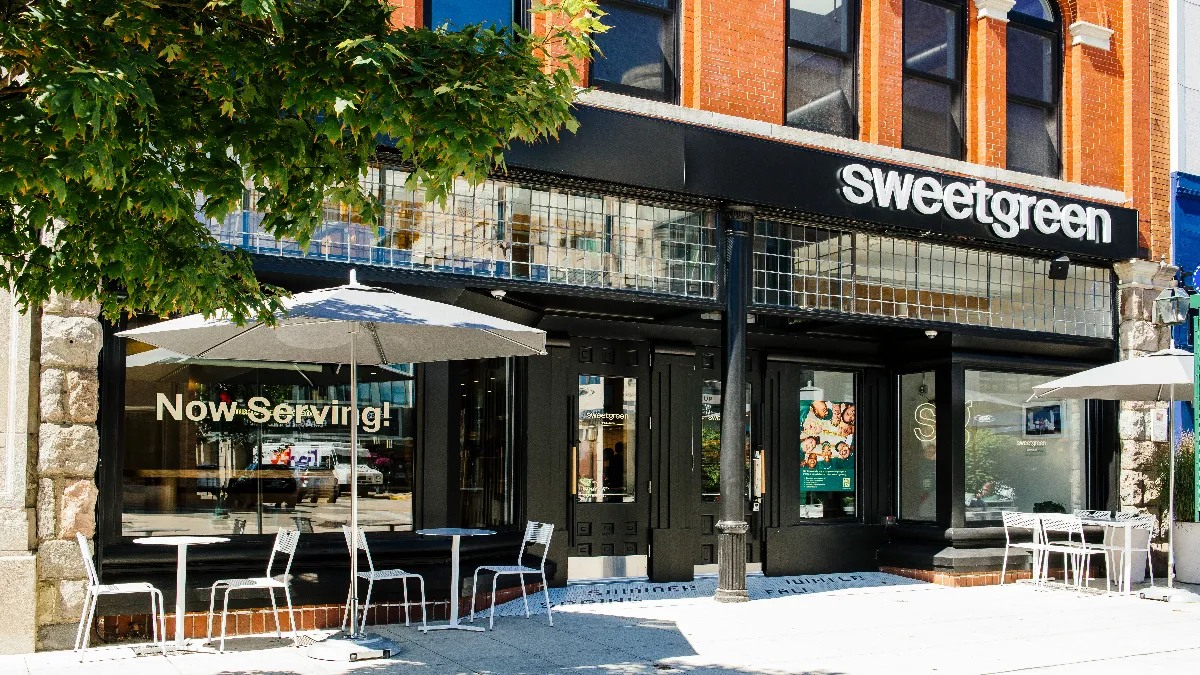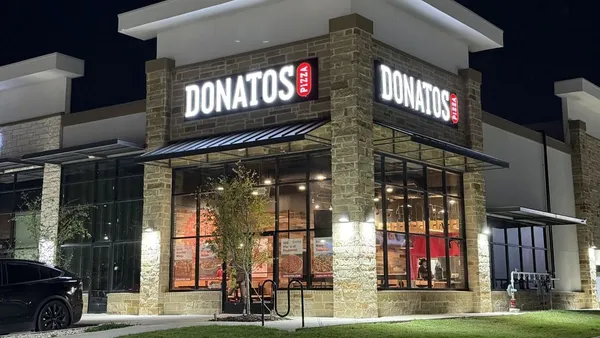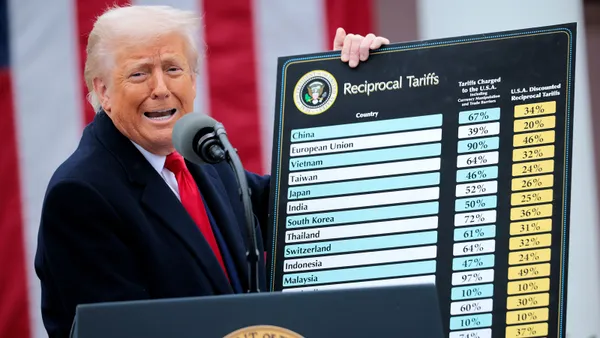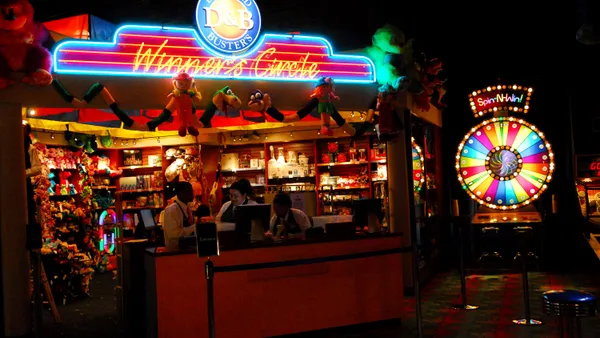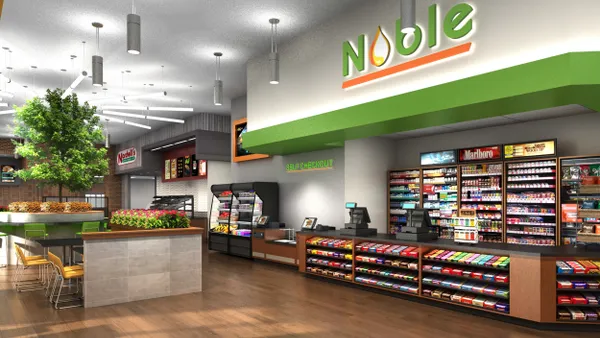Dive Brief:
- Sweetgreen expects to have at least 35 new restaurants open by the end of the year, Sweetgreen co-founder and CEO Jonathan Neman said Tuesday during the company’s Q2 earnings call.
- The company has opened new 20 stores already this year, with the latest opening on Tuesday in Birmingham, Michigan, a suburb of Detroit and a new market for the fast casual chain.
- The company had 166 company-operated restaurants open as of June 26, according to its 10-Q filing. Neman said Sweetgreen remains on track to double its footprint over the next three to five years and to reach 1,000 restaurants by the end of the decade.
Dive Insight:
Despite its lack of profitability and a recent round of layoffs, Sweetgreen remains confident it will open at least 35 new stores this year because it foresaw supply chain challenges with equipment and mass purchased some last year to get ahead of these issues, Neman said.
“The confidence really comes from the fact that leases are being signed and deals are in construction,” Neman said. “We have a very healthy, robust pipeline next year with some great sites, great deals and many leases already signed. The development is very much on track.”
Other chains, like Shake Shack, increasing development timelines because they are waiting on equipment that has been delayed. Chipotle has faced permitting, construction and material shortages while McDonald’s is experiencing longer times for permitting in some areas.
While Sweetgreen continues to develop traditional stores, it is also exploring different store formats, including a drive-up mobile pickup window and a digital-only store, both of which are expected to open this year.
“With nearly two-thirds of our sales coming from digital channels, we have the unique opportunity to expand formats to create hyper convenience for our digital and pickup customers,” Neman said.
In the next few months, the fast casual chain is also going to open restaurants in three new markets: Minneapolis, Indianapolis and Tampa, Florida, resulting in five new markets this year, he said.
The company is also opening more locations in suburbs, shifting its development pipeline away from urban areas, following a slower than expected return to office and erratic recovery in metro areas, Neman said. In 2019, 65% of Sweetgreen’s stores were urban versus 35% in suburban markets, Sweetgreen CFO Mitch Reback said. Today, that split is 50-50, with urban restaurants seeing average unit volumes of at $2.7 million and suburban AUVs at $3.1 million.
“Our success over the past two and a half years in suburban trade areas gives us great confidence in our model and our pipeline, which is now over 85% suburban,” Reback said.
These stores are also reporting high sales numbers on day one. One store in Shrewsbury, New Jersey, saw about $15,000 in sales its first day. When Sweetgreen opened its Birmingham store earlier this week, the stores reached $13,000 in sales in its first lunch daypart, Neman said.
“The model is working,” Neman said. “We’re very confident in the model long term and we’re committed to our long-term pipeline of growth.”



